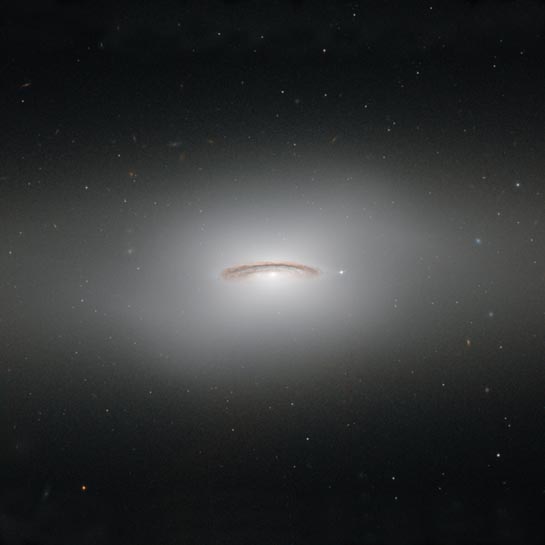
Lenticular Galaxy
RA 12h 34m 03.029s Dec +07° 41' 56.90"
Virgo
55 million light-years
10.7
7.2 × 2.4 arcmin
ESA/Hubble & NASA. Ack: Judy Schmidt
October 20, 2014
ABOUT THIS IMAGE:
This neat little galaxy is known as NGC 4526. Its dark lanes of dust and bright diffuse glow make the galaxy appear to hang like a halo in the emptiness of space in this new image from the NASA/ESA Hubble Space Telescope. It was first discovered by William Herschel on April 13, 1784 and "rediscovered" on December 28, 1785 and listed as NGC 4560. So NGC 4526 and NGC 4560 are one and the same.
Although this image paints a picture of serenity, the galaxy is anything but. It is one of the brightest lenticular galaxies known, a category that lies somewhere between spirals and ellipticals. It has hosted two known supernova explosions, one in 1969 and another in 1994, and is known to have a colossal supermassive black hole at its center that has the mass of 450 million Suns.
NGC 4526 is part of the Virgo cluster of galaxies. Ground-based observations of galaxies in this cluster have revealed that a quarter of these galaxies seem to have rapidly rotating discs of gas at their centers. The most spectacular of these is this galaxy, NGC 4526, whose spinning disc of gas, dust, and stars reaches out uniquely far from its heart, spanning some 7% of the galaxy's entire radius.
This disc is moving incredibly fast, spinning at more than 250 kilometers per second. The dynamics of this quickly whirling region were actually used to infer the mass of NGC 4526's central black hole - a technique that had not been used before to constrain a galaxy's central black hole.
This
image was taken using Hubble's Wide Field Planetary Camera 2.